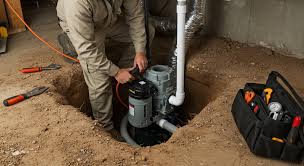Hassle-Free Bull Bar Installation Tips | Expert Advice for Success

Bull bars can be a useful addition to your car because of their protection qualities and tough look. You’ve come to the right location if fitting bullbars would improve the safety and appearance of your car. We’ll walk you through a thorough, step-by-step procedure for installing bull bars on several car models in this easy-to-use guide. Regardless of the vehicle you drive—a crossover, SUV, or truck—this handbook has it all.
Step 1: Gather the Necessary Tools
Before diving into the installation process, make sure you have all the required tools at your disposal. This is an easy list to help you get going:
- Bull Bar Kit: Ensure you have the complete bull bar kit, including the bars, brackets, and mounting hardware.
- Socket Set and Wrenches: Different vehicle models may require different sizes, so having a variety of sockets and wrenches is essential.
- Torque Wrench: This tool is crucial for tightening nuts and bolts to the recommended specifications.
- Screwdrivers: Phillips and flathead screwdrivers for various components.
- Measuring Tape: Useful for ensuring precise placement of the bull bars.
- Level: Ensures that the bull bars are installed evenly and straight.
- Jack and Jack Stands: These are necessary for lifting and securing your vehicle during installation.
- Protective Gear: Safety first! Put on safety glasses and gloves to keep yourself safe while installing.
Step 2: Choose the Right Bull Bars for Your Vehicle
Before making any installations, it’s essential to ensure that the bull bars you’ve chosen are compatible with your specific vehicle make and model. Refer to your vehicle’s manual or consult with the bullbar manufacturer to confirm compatibility.
Step 3: Prepare your vehicle.
First, park your car on a level, stable surface. Engage the parking brake and, if possible, use wheel chocks to prevent any unintentional movement. This creates a secure environment for the installation process.
Step 4: Locate and mark mounting points.
Carefully review the installation of bull bars instructions provided by the manufacturer. Identify the designated mounting points on your vehicle’s front end where the bull bars will be attached. Use a measuring tape to ensure accuracy, and mark these points with a pencil or masking tape.
Step 5: Assemble the Bull Bars
Lay out all the components of the bullbar kit and follow the manufacturer’s instructions to assemble the bullbars. This may involve attaching brackets, connecting sections, or other specific steps depending on the design of the bull bars.
Step 6: Position the bull bars.
With the bull bars assembled, position them against the marked mounting points on your vehicle. Use a level to ensure they are straight, and adjust as needed. This step gives you a visual confirmation of how the bullbars will look once installed.
Step 7: Attach bull bars to mounting points.
Secure the bull bars to the designated mounting points using the provided brackets and hardware. Hand-tighten the nuts and bolts initially, leaving them loose enough to make adjustments if necessary.
Step 8: Adjust and align
Take a step back and assess the alignment of the bull bars. Make any necessary adjustments to ensure they are centered and level. Once satisfied with the placement, use the torque wrench to tighten the nuts and bolts to the manufacturer’s recommended specifications.
Read also Exploring the Many Uses of Prefabricated Industrial Steel Buildings
Step 9: Double-check and Secure
Go over all the connections and fasteners to double-check their tightness. Ensure that everything is securely in place before moving on to the final step.
Step 10: Stability test.
Give your bullbars a gentle shake to test for stability. They should be firmly attached to your vehicle without any wobbling. If there’s any movement, revisit the previous steps to identify and address the issue.
Safety Precautions:
- Work in a Well-Ventilated Area: If you’re working indoors, make sure there’s proper ventilation to avoid inhaling fumes from tools or materials.
- Follow Manufacturer Instructions: Always adhere to the specific instructions provided by the bullbar manufacturer. This ensures proper installation and compliance with safety standards.
- Use Proper Lifting Equipment: If your vehicle needs to be lifted for installation, use a reliable jack and secure it with jack stands. Never operate under a car that is merely supported by a jack.
- Protective Gear: Wear gloves and safety glasses to protect your hands and eyes from any sharp edges or debris.
Additional Tips for Maintenance and Care
Now that your bull bars are securely installed, it’s essential to keep them in top-notch condition for long-lasting performance. Regularly inspect the bolts and brackets for tightness, especially after off-road adventures or long drives. Additionally, consider applying a protective coating to prevent rust and corrosion, especially if you live in an area with harsh weather conditions.
Final Words of Encouragement
As you embark on this journey of enhancing your vehicle with bull bars, remember that every step is an accomplishment. Your effort in installing these protective bars not only adds a layer of safety to your vehicle but also reflects your passion for customization and adventure. Whether you’re a seasoned DIY enthusiast or a first-time installer, the satisfaction of completing the installation is a testament to your dedication to making your vehicle uniquely yours.




